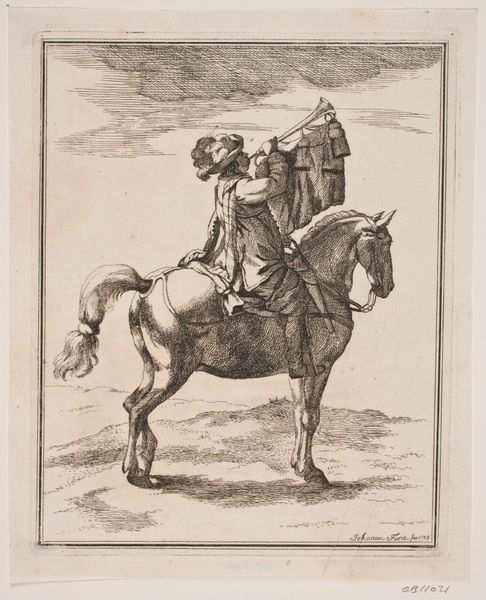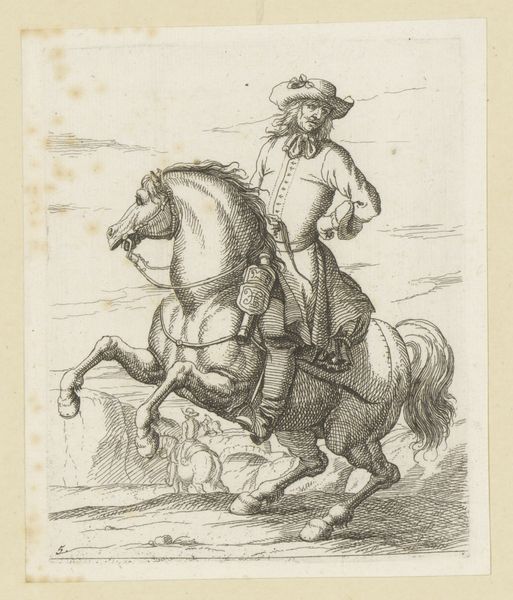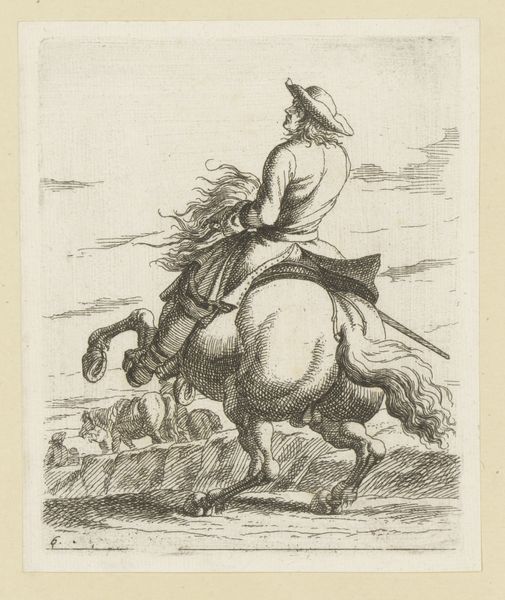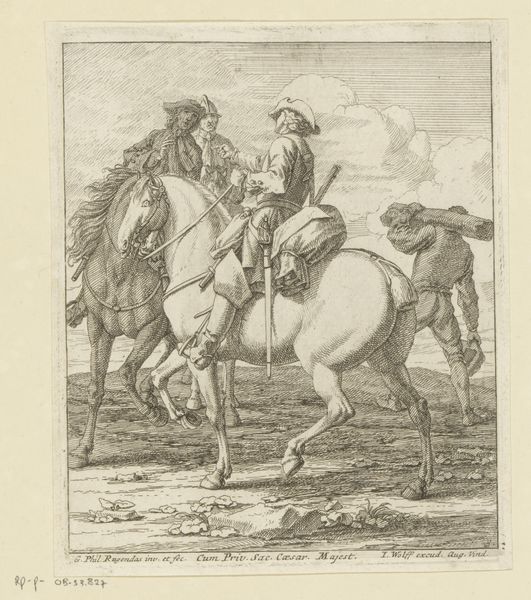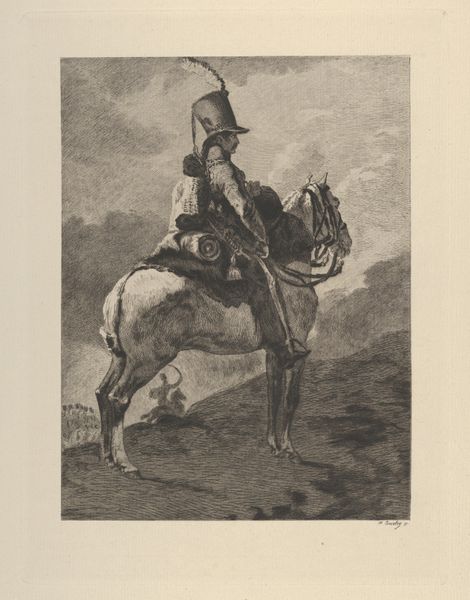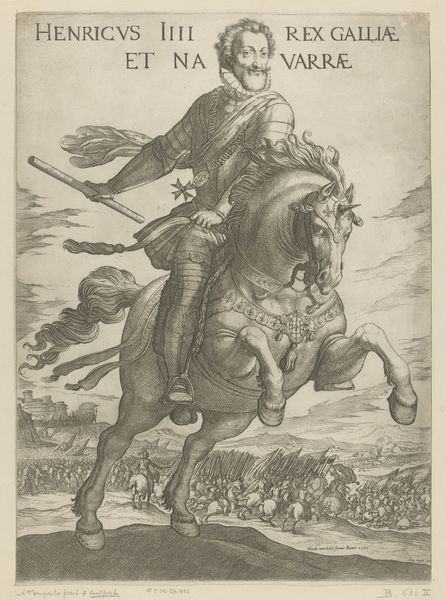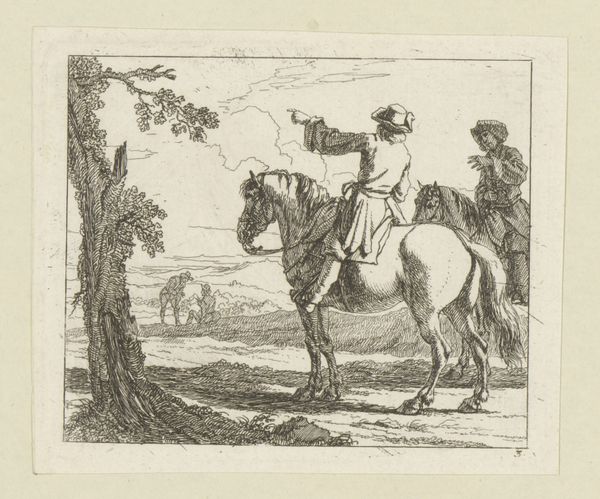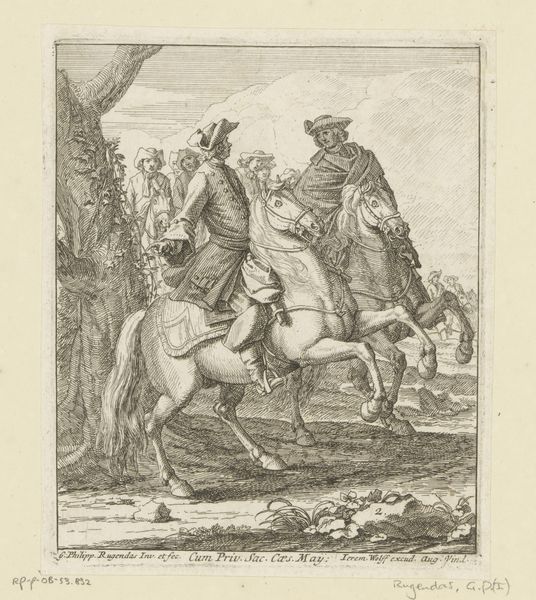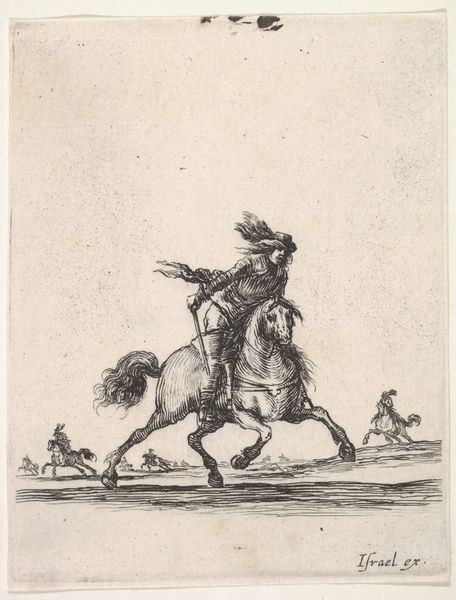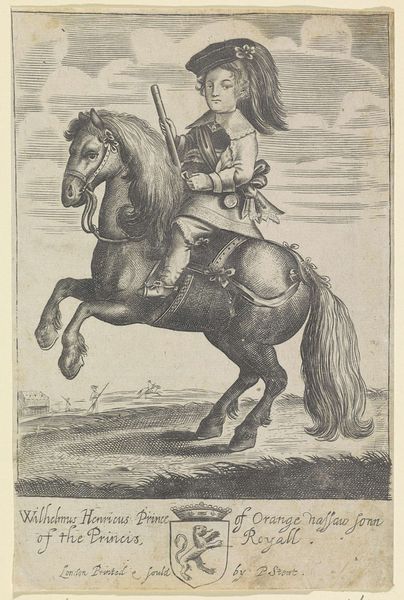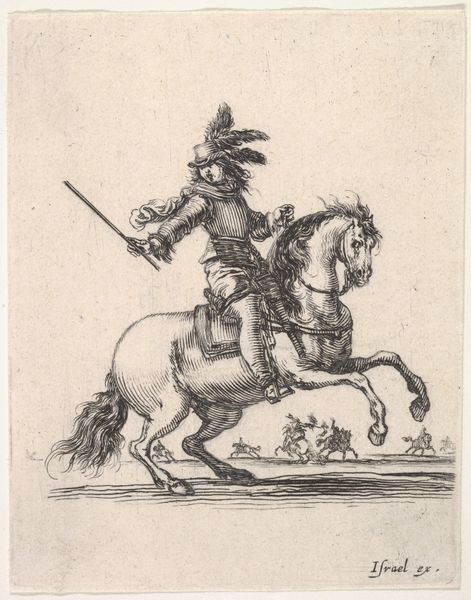
print, engraving
#
portrait
#
baroque
# print
#
landscape
#
figuration
#
engraving
Dimensions: height 134 mm, width 107 mm
Copyright: Rijks Museum: Open Domain
Georg Philipp Rugendas made this print of a horse and rider using etching, a printmaking technique where lines are incised into a metal plate with acid. This process requires a skilled hand to guide the etching needle through a wax coating, exposing the metal beneath to the corrosive acid. The texture of the image is a direct result of this labor-intensive process; the dense, cross-hatched lines create shading and volume, bringing the scene to life. Note the horse's muscular form and the rider's commanding presence – all achieved through the careful manipulation of line. Prints like this played a crucial role in disseminating images and ideas in the 17th and 18th centuries, acting as a form of mass media before photography. Rugendas' print offered a glimpse into military life and equestrian culture, circulating images of power, skill, and social status. Appreciating the materials and processes behind this print opens up a broader understanding of its significance.
Comments
No comments
Be the first to comment and join the conversation on the ultimate creative platform.
